Telling Time Troubleshooter: FAQ & Analog Clock Help for Parents
Is teaching your child to tell time on an analog clock feeling like an uphill battle? You're not alone. Many parents watch the minutes tick by in frustration, facing common hurdles when helping their kids master this essential life skill. This guide is like your secret weapon for telling time! We're here to zap those tricky clock challenges with super fun, kid-friendly ideas. So, how do you read an analog clock step by step? Get ready to turn confusion into confidence and help your child have fun reading a clock with our interactive analog clock for kids.
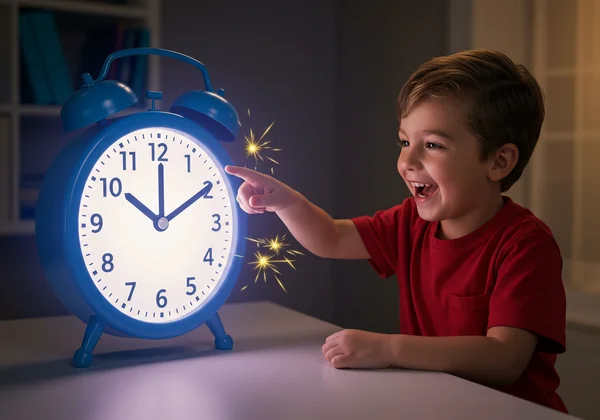
Why Learning to Tell Time is Hard for Kids: Common Analog Clock Challenges
Before we dive into solutions, it’s helpful to understand why learning to tell time can be so tricky for young minds. An analog clock is an abstract system. It involves understanding that two hands move at different speeds, that the same number can mean two different things (e.g., "2" can be 2 o'clock or 10 minutes), and grasping concepts like "half past" and "quarter to." This isn't just about memorization; it's about developing complex spatial and numerical reasoning. Spotting these tricky bits is the first step to helping your child with patience and a smile.
Decoding the Analog Clock: Hour and Minute Hand Mix-Up
One of the most common points of confusion is mixing up the hour and minute hands. A child might see the long hand pointing to the 9 and the short hand near the 4 and say "9:20." They are trying to apply a single rule to both hands, which is a logical but incorrect assumption. The "big hand" points to the "small numbers" (minutes), while the "small hand" points to the "big units" (hours). This duality is inherently confusing. Our tool uses a blue hour hand and a red minute hand, providing a simple visual cue to help differentiate their roles from the very beginning.
Mastering Tricky Time Intervals: Teaching Quarters, Halves, and More on Analog Clocks
Once a child understands the basics of hours and minutes, they face the next challenge: time intervals. Phrases like "quarter past," "half past," and "twenty 'til" require another layer of mental processing. They need to visualize the clock face as a circle that can be divided into fractions and then calculate forwards or backward from the hour. This leap from concrete counting to abstract fractional concepts can be a significant sticking point, often leading to frustration for both the child and the parent trying to explain it.
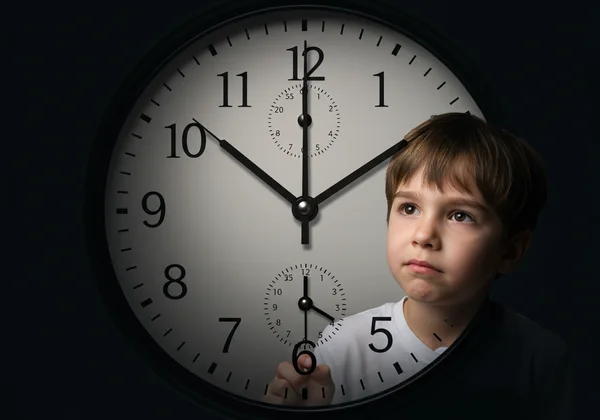
Practical Solutions: Mastering Analog Clocks & Overcoming Common Time-Telling Mistakes
Now for the good news: every one of these challenges can be overcome with the right approach. The key is to make learning interactive, incremental, and most importantly, fun. Forget boring worksheets and static diagrams. It's time to play with time.
Engaging Strategies: Fun Telling Time Games & Interactive Analog Clock Practice
The secret to keeping a child engaged is to turn learning into a game. Instead of a formal lesson, create a "Time Mission." Can they set the clock to snack time? Can they show what time their favorite cartoon starts? Using an educational clock that they can physically (or digitally) manipulate gives them a sense of control and makes the experience tangible. Celebrate small victories with enthusiasm. When they correctly identify a time, make it a big deal! Positive reinforcement transforms a potentially stressful task into an exciting achievement. This approach builds not just knowledge, but a positive attitude toward learning itself.
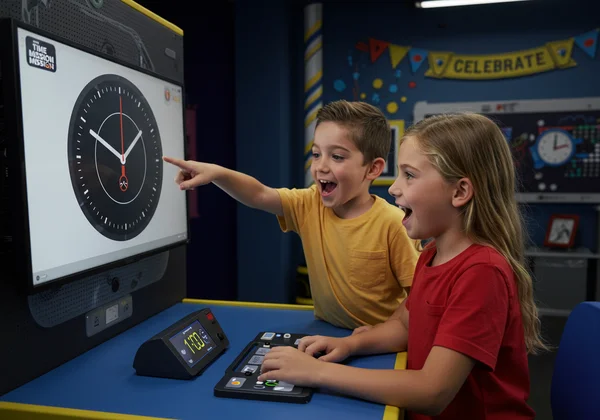
Step-by-Step Guide: How to Teach Kids to Tell Time Consistently
Don't try to teach everything at once. A structured, step-by-step method prevents overwhelm and builds a solid foundation for your child to succeed.
-
Master the Hour Hand: Start with only the hour hand. Use a tool where you can "lock" the minute hand at the 12. Move the hour hand around and ask, "What o'clock is it?" This solidifies the primary function of the short, blue hand.
-
Introduce the Minute Hand: Next, lock the hour hand and focus solely on the red minute hand. Practice counting by fives as you move it around the clock face: 5, 10, 15, 20... This repetition is crucial for building fluency.
-
Combine the Hands: Now, unlock both hands. Start with simple times like 3:15 or 5:30. Explain how the hour hand will move a little bit past the hour as the minute hand goes around.
-
Practice Makes Perfect: Use a "Random Time" feature to generate new challenges. This keeps practice sessions fresh and tests their knowledge in a low-pressure way. Check out our telling time games for endless practice.
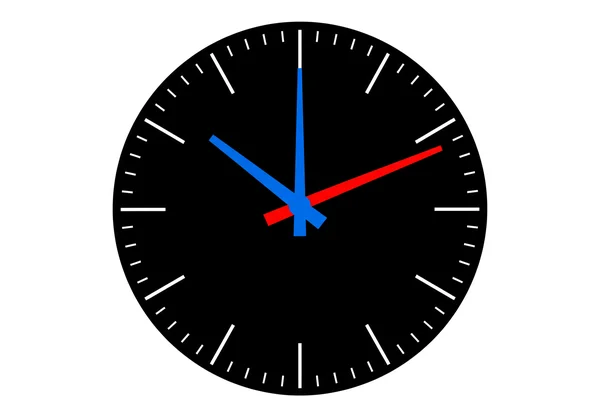
Building Time Confidence: Why Analog Clocks Still Matter for Learning & Life Skills
In a world dominated by digital displays, some parents wonder if learning to read an analog clock is still relevant. The answer is a resounding yes. It’s about much more than just telling time; it’s about developing critical cognitive skills.
From Clock Face to Daily Routine: Why Analog Still Matters
When children learn to read an analog clock, they are developing their understanding of fractions, spatial reasoning, and cyclical patterns. They learn to visualize the passage of time, which helps in planning and managing their day. Connecting the clock to their daily routine makes it meaningful. "We will read a story when the little hand gets to the 8." This helps them anticipate events and build an internal sense of time, a skill that digital clocks don't foster in the same way.
The Interactive Edge: How Our Interactive Clock Transforms Learning
This is where the right tool can make all the difference. A static picture of a clock is helpful, but an interactive one is a game-changer. On our website, we designed the ultimate time-telling playground. Children can grab the blue hour hand and the red minute hand with a mouse or finger and move them anywhere they want. As they do, the digital time updates instantly, providing immediate feedback.
Want to test their knowledge? Click "Hide Digital Time" for a pop quiz, then "Show Digital Time" for the big reveal. The "Random Time" button creates endless practice opportunities, perfect for classroom clock practice. This hands-on experience transforms an abstract concept into a concrete and playful activity, directly addressing the core challenges that make telling time hard.
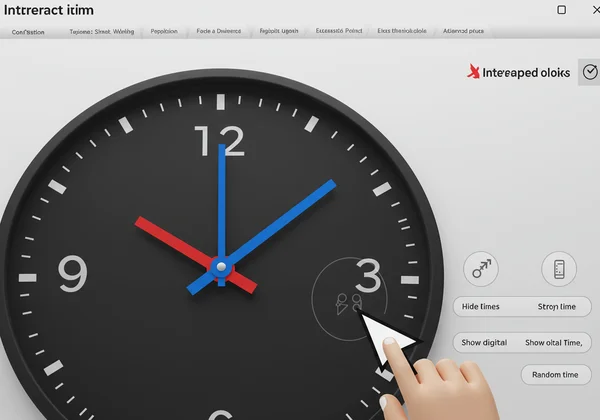
Your Partner in Time: Making Analog Clocks Click!
Teaching your child to tell time doesn’t have to be a source of stress. By understanding the common hurdles, adopting a playful and patient strategy, and using a powerful interactive tool, you can empower your child with this timeless skill. You can move from frustrating moments to triumphant "Aha!" moments. You are their best teacher, and we're here to be your best resource.
Ready to stop troubleshooting and start teaching with joy? Visit our free interactive clock today and let your child discover how fun learning to tell time can be!
Frequently Asked Questions About Teaching Time
What age should a child be able to read an analog clock?
Every kid's a unique time traveler! Most little learners are ready to dive into analog clocks between 5 and 7 years old. By 8, many are whizzing through time like pros! The key is to introduce concepts gradually and without pressure.
How do you explain the hour and minute hand to a child effectively?
Use simple analogies. The hour hand is the "short, slow" hand because "hour" is a short word and hours pass slowly. The minute hand is the "long, fast" hand because "minute" is a longer word and minutes go by quickly. Using color-coded hands, like the blue hour hand and red minute hand on our online analog clock, also provides a strong visual distinction.
Why are analog clocks still taught in school today?
Educators continue to teach analog clocks because it helps develop crucial cognitive skills beyond just time-telling. It enhances a child's understanding of numerical relationships, fractions (quarters, halves), counting by fives, and spatial reasoning. These foundational concepts are beneficial across many areas of their academic development.
Are analog clocks better for learning than digital ones for kids?
For learning the concept of time, yes. Analog clocks provide a visual representation of time's passage and its cyclical nature. They help children understand how much time is left until an event or how long something takes. Digital clocks only show a single moment, making it harder to grasp the broader context of time.
What should I do if my child is struggling with elapsed time?
Elapsed time is an advanced concept. Use a hands-on tool to make it visual. Set a start time on an adjustable clock, then physically move the minute hand forward to the end time while counting the minutes aloud. For example, "It's 2:15 now. Your show starts at 2:45. Let's count how many minutes that is!" This makes the abstract idea of passing time concrete and understandable.